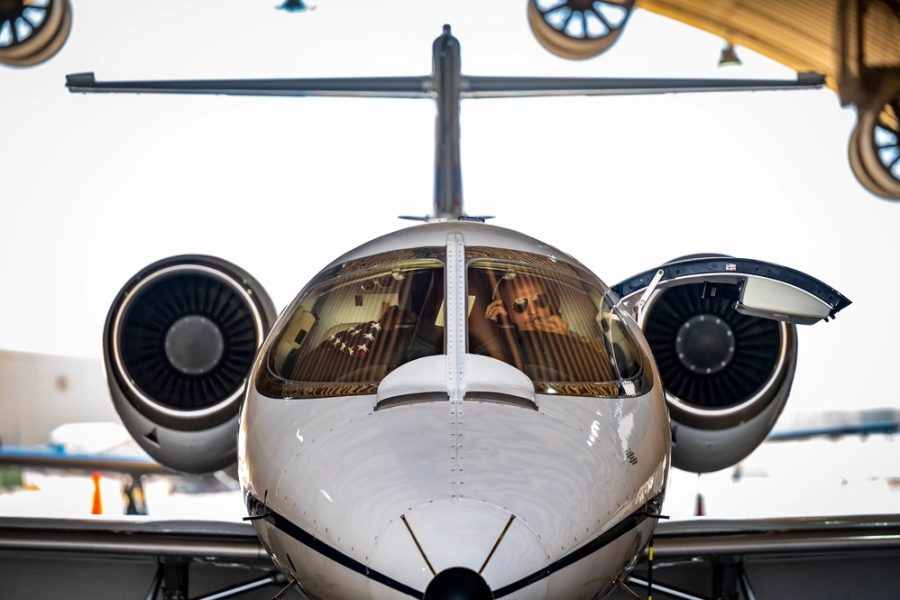SCOTT AIR FORCE BASE, Ill. — Air Mobility Command is known for large, lumbering aircraft such as the C-5 transport jet and the KC-135 tanker. But tucked away in a hangar here at AMC headquarters is a fleet of shiny C-21s, zippy business jets that ferry distinguished visitors (DVs), wounded troops, and vital cargo in a hurry.
At an average age of 38.5 years, the C-21 is on the older side, which makes for a unique flying experience.
“It’s like your uncle’s old Porsche,” C-21 evaluator pilot Maj. Angus MacDonald told Air & Space Forces Magazine. “It’s not going to drive as nice as the new Porsche, but it’s pretty cool to drive.”
Like a Porsche sports car, the C-21 also accelerates faster than its airlift peers, both in flight and in terms of preflight preparation.
“It’s a simple aircraft to prep, to hop in, and to take off,” MacDonald said. “The mission can be complex, but the ability to efficiently set up a mission, task a commission, and get the plane off the ground is pretty quick.”
That ability to accelerate is what makes the aging, 19-jet C-21 fleet still in high demand around the world. While the C-130 transport plane can land almost anywhere, and the C-5 can carry small armies across oceans, the C-21 offers short-range rapid delivery for DVs, patients, and essential cargo.
When the demand is “‘Hey, we need this right now and we don’t want to schedule it on a different airplane that’s going to take a while to spin up and get going,’” the C-21 responds, MacDonald said.
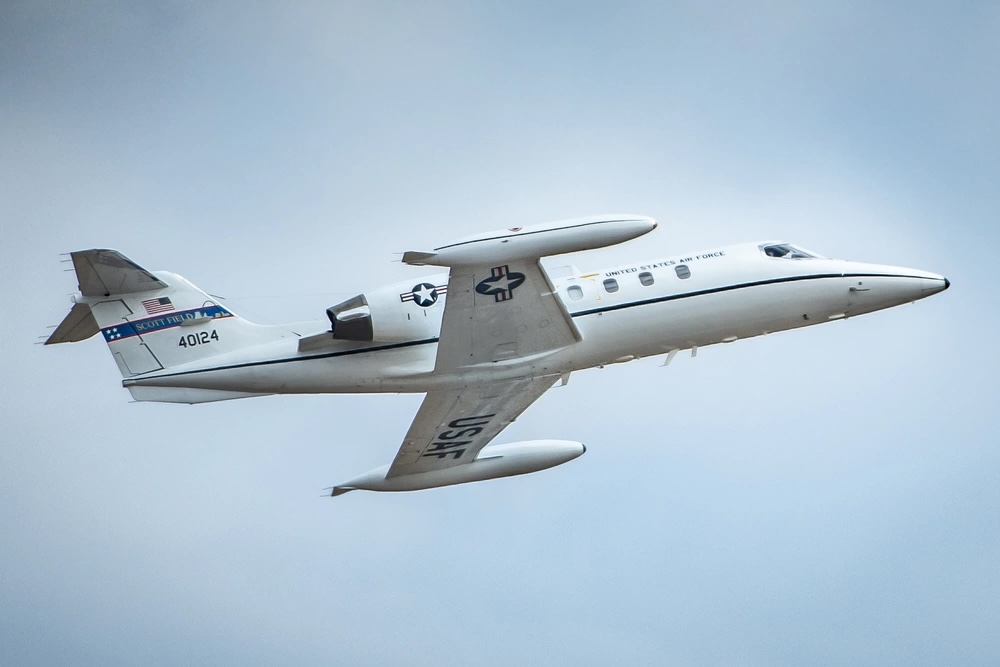
Multi-Capable Aircrew
Most C-21 crews are on the younger side: MacDonald estimated that 60 to 70 percent of the 458th Airlift Squadron at Scott Air Force Base are company-grade officers (lieutenants and captains), with a large percentage of those on their first assignment out of pilot training. For younger pilots, flying the C-21 is like stepping back in time to a less-automated age.
“We don’t have a computer that’s going to squawk at you saying ‘this box is in trouble, please pull that circuit breaker,’” the evaluator pilot explained. “You need to know what checklist to run and how to do your own diagnostic. It’s a little bit more rudimentary.”
And that’s just the flying. At the 458th, pilots are also expected to do the preflight logistics, planning, diplomatic clearances, and other details that the Tanker Airlift Control Center at Scott usually handles for most other Air Mobility Command units. MacDonald once got a call on a Friday afternoon to bring a presidential advisor back from Mexico City in time for an important meeting in Washington, D.C. on Monday.
Commercial travel and other airlift units were not viable, so the major and another pilot spent all weekend setting up the mission and getting hold of U.S. embassy officials and defense attachés for diplomatic clearance. They managed to bring the advisor back in time—it was not easy, but it was fulfilling.
“There’s a reward afterwards, looking back and saying ‘we definitely accomplished something cool and did a lot of work with just two pilots,’” he said.
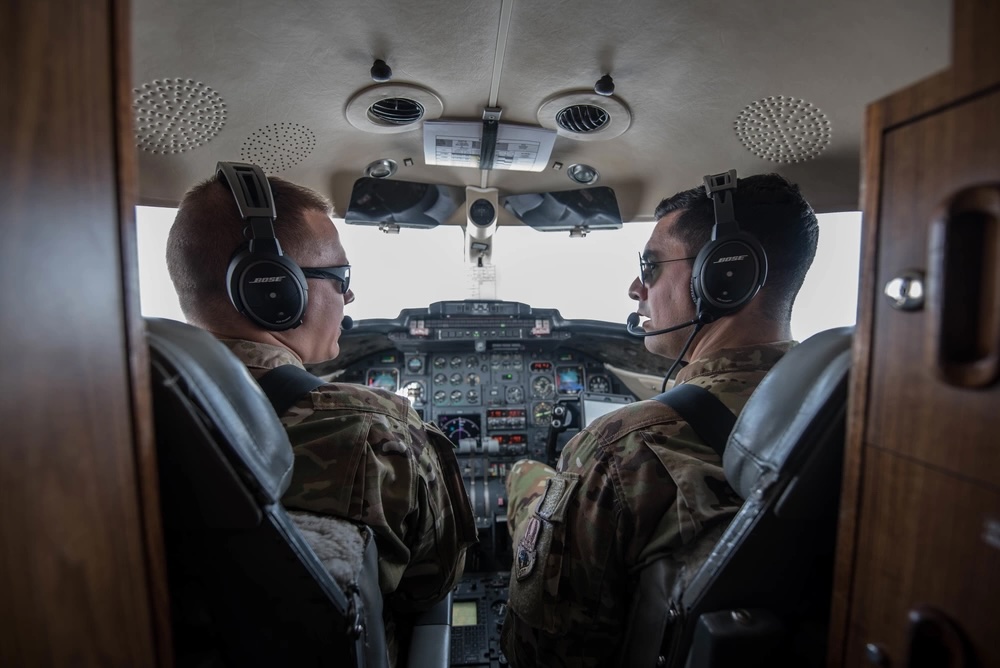
It also forces younger pilots to grow up fast. MacDonald recalled flying a mission as a first lieutenant with another silver bar-wearer over the Middle East, an uncommon level of responsibility for junior air crew.
“We’ll take a first lieutenant out of undergraduate pilot training and a year from now they could be a full-up aircraft commander flying DVs and aeromedical evacuations,” the major said. “They’re 24, 25 years old and we’re giving them all of this autonomy. It is on them to get it done.”
Connective Tissue
C-21 crews get plenty of practice planning missions due to the high demand for the jet. Most sorties involve ferrying high-level military and civilian leaders. The C-21 crews might fly generals to deliver two different speeches in two different states on the same day, shuttle top Air Force leaders to and from the biannual CORONA conference, or take Pentagon leaders to explain new strategies to their troops.
“The C-21 is the connective tissue to bring those leaders directly to the units that need that information and need it in person,” MacDonald said. “That’s literally what we do.”
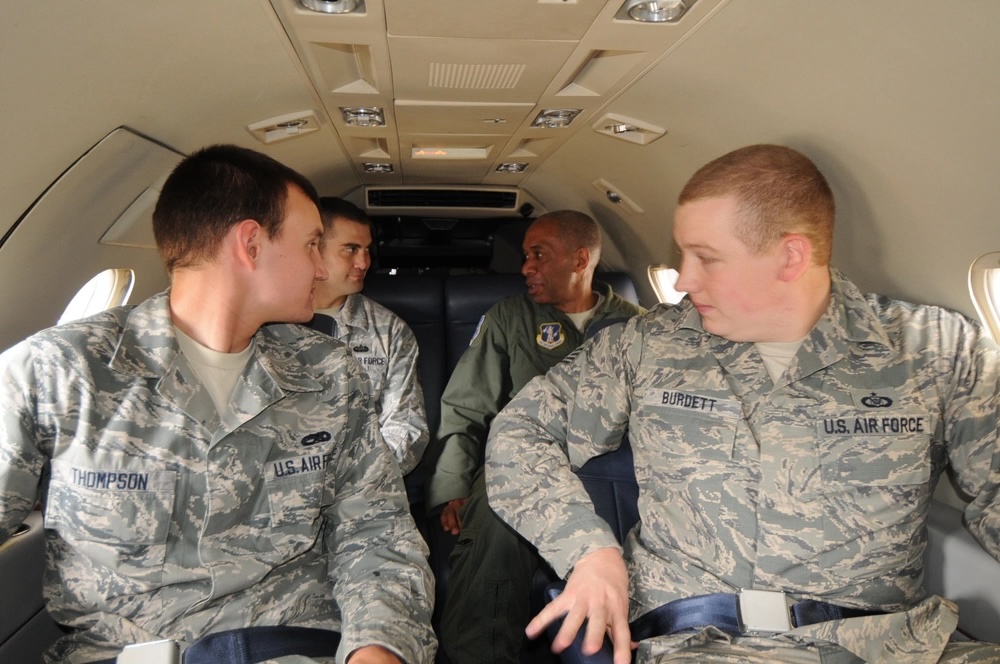
It’s not exactly luxury flying; the small cabin fills up fast, while the lavatory is a box with a toilet seat on top that slides out from under a jump seat. But the Air Force flies the jet for speed, and that speed saves lives: C-21 crews also fly aeromedical evacuation missions for injured troops, State Department employees, and others in need of urgent higher care. Recent flights involved picking up service members with punctured lungs or late-stage pregnancy issues and flying them back to Landstuhl Regional Medical Center in Germany on short notice.
The crew may have as little as two hours to coordinate and brief a critical care action team, get the medical experts on board, and get moving, MacDonald explained. One advantage of the C-21 is that its wide door can accommodate a Spectrum life support system, a kind of mobile hospital bed.
“I thought it was one of the most rewarding missions I have ever done in an aircraft,” a C-21 pilot said about an aeromedical evacuation mission in 2016.
Besides transporting generals and patients, C-21s also act as high-speed couriers for U-2 spy plane logistics, blood supplies for partner forces fighting ISIS, and other important cargo. During Operations Desert Shield and Desert Storm, C-21 crews flew classified air tasking orders and intelligence photos to units that could not receive them otherwise.
All of these missions: VIP transport, aeromedical evacuation, and courier, are grouped under the term operational support airlift, MacDonald said. Sometimes those missions involve flying into dangerous territory, leading to the tongue-in-cheek motto “unaware, unafraid,” which highlights C-21 crews’ dedication to carrying out their mission.
“We don’t have any defensive systems on this aircraft, but name a base in CENTCOM and we’ve probably been there,” MacDonald said. “In regards to acceleration: sometimes we don’t even know what we’re going to be asked to do, we’re pretty much unaware, and then we get a mission tasking and we do the best job that we can.”
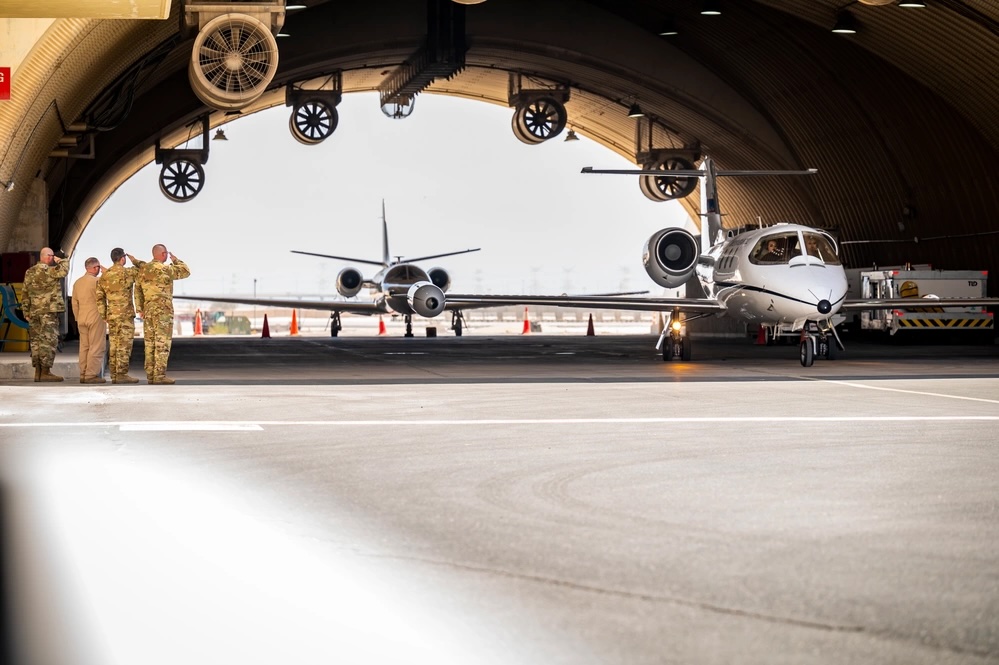
Looking Ahead
With an average age of 38.5 years, the C-21 fleet is older than many of the pilots who fly it, but recent upgrades keep the jet relevant. Starting in 2017, the Avionics Upgrade Program replaced the cockpit’s analog dials with digital displays, modernized the aircraft’s navigation, communication, and flight management systems, brought the jets in line with Federal Aviation Administration mandates, and improved crews’ ability to work in unfamiliar environments without the usual navigation aids.
The upgrades, plus contract maintainers scrounging spare parts from civilian jets or retired Air Force C-21s, keep the aircraft’s mission capable rate at a remarkable 100 percent, a critical factor considering its high operational tempo. MacDonald estimated that the 458th may be flying more than any other active-duty Learjet squadron in Air Force history.
But the future for the C-21 is uncertain. The Air Force originally had about 80 C-21s when they first entered service in 1984, but cost-cutting efforts shrank the fleet to its current size of just 19 jets split between two locations: Scott Air Force Base, Ill., where the 458th handles operational support airlift in the western hemisphere, and Ramstein Air Base, Germany, where the 76th Airlift Squadron handles the same responsibility in Europe.
There currently are no public plans to replace the C-21, and an AMC spokesperson said the fleet is currently cycling through a 20,000-hour flight control inspection program in an effort to keep it flying into the 2030s.
“Given the challenging fiscal environment, AMC continues to review each weapon system in the context of our warfighting requirements to ensure we recapitalize and modernize the fleet to meet the mobility demands of the joint force,” the spokesperson said. “AMC values the important contribution to our executive fleet with the operational support airlift mission, and we will continue to monitor these aircraft to ensure they continue to provide safe and reliable airlift.”
In the meantime, MacDonald expects the high demand is here to stay.
“We’re relied on pretty heavily and I think we will continue to be relied on until the 21’s done,” he said. “The plane is not going to last forever but I think the mission will.”
